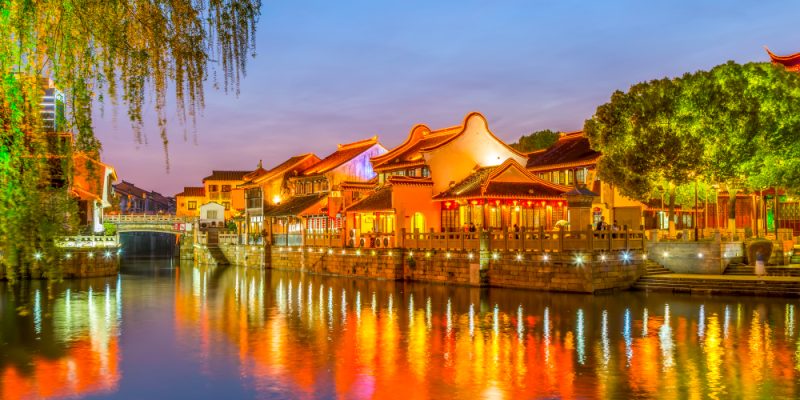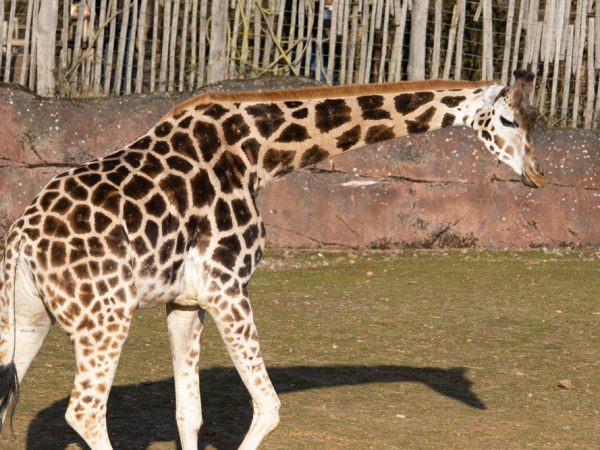Hue Vietnam: 10 Must-See Attractions for History Buffs

Hue, the former imperial capital of Vietnam, is a city steeped in history, culture, and timeless beauty. Located in central Vietnam, Hue is often overlooked by tourists who flock to the bustling cities of Hanoi or Ho Chi Minh City. However, this hidden gem offers an abundance of historical sites that transport visitors back in time to the glory days of the Nguyen Dynasty. For history enthusiasts, Hue is the ultimate destination to discover Vietnam’s royal heritage, ancient architecture, and fascinating traditions.
In this article, we will guide you through 10 must-see attractions in Hue that will captivate any history buff. From grand imperial palaces to serene pagodas, these sites showcase the rich cultural tapestry of this ancient city.
1. The Imperial City of Hue (Hue Citadel)
The Imperial City, or the Hue Citadel, is undoubtedly the most iconic and significant historical site in the city. Built between 1804 and 1833 during the reign of Emperor Gia Long, the Citadel served as the seat of the Nguyen Dynasty for over a century. It is a vast complex that includes royal palaces, temples, gardens, and military structures, all enclosed by imposing walls and a moat.
Visitors to the Citadel will be awed by its grandeur, especially the Forbidden Purple City, the emperor’s private quarters. While much of the Citadel was damaged during the Vietnam War, efforts have been made to restore and preserve its majestic beauty, making it a UNESCO World Heritage Site.
2. The Tomb of Emperor Tu Duc
Tu Duc’s Tomb is one of the most well-preserved and serene royal tombs in Hue. The tomb complex, located about 8 kilometers outside the city center, is a peaceful retreat set amidst lush pine forests and tranquil lakes. Tu Duc, the fourth emperor of the Nguyen Dynasty, designed the tomb as both a final resting place and a retreat for himself.
The tomb is an architectural masterpiece, with intricate carvings and beautiful pavilions. The design reflects the emperor’s love for poetry and the arts, and the site offers insight into the spiritual and cultural life of the imperial family. Don’t miss the emperor’s tomb, which is a hidden gem within the complex.
3. The Tomb of Emperor Khai Dinh
Emperor Khai Dinh’s Tomb is one of the most unique royal tombs in Vietnam. Unlike the traditional Vietnamese architectural style of earlier tombs, Khai Dinh’s tomb combines both Eastern and Western influences. The tomb is an eclectic mix of traditional Vietnamese motifs and European Baroque-style architecture.
Located on a steep hill, the tomb requires visitors to climb over 100 steps to reach the entrance, but the effort is well worth it. The interior is covered in stunning mosaics made from glass, porcelain, and ceramic, depicting various scenes from the emperor’s life and the country’s history. The tomb is often regarded as a blend of artistic innovation and imperial power.
4. Thien Mu Pagoda
Thien Mu Pagoda, also known as the “Heavenly Lady Pagoda,” is one of the oldest and most significant religious sites in Vietnam. Situated on a hill overlooking the Perfume River, the pagoda is an iconic symbol of Hue and represents the city’s spiritual and historical legacy.
The pagoda was built in 1601 during the reign of the Nguyen Lords and has since become a symbol of Buddhism in Vietnam. Its seven-tiered structure is the tallest in the country, and its location offers stunning views of the river and surrounding countryside. The pagoda is also famous for its historical significance, particularly the 1963 protests led by Buddhist monks against the government of South Vietnam.
5. The Royal Ancestral Temple (Văn Miếu)
The Royal Ancestral Temple, also known as Văn Miếu, is dedicated to honoring the Nguyen Dynasty emperors. Located within the Imperial City, the temple served as a place of worship for the royal family, where they could pay their respects to their ancestors.
The architecture of the temple is magnificent, with intricate carvings and a series of beautifully decorated altars. It’s a peaceful and reflective space, offering a glimpse into the spiritual practices of the imperial family. The temple is an excellent example of Vietnamese religious architecture and is a must-visit for anyone interested in the country’s royal past.
6. The Hue Museum of Royal Antiquities
The Hue Museum of Royal Antiquities, located within the Imperial City, is home to an impressive collection of artifacts from the Nguyen Dynasty. The museum showcases over 10,000 items, including imperial clothing, furniture, porcelain, and royal weapons.
Many of the items are gifts from the emperors to their officials or were used in royal ceremonies. A visit to the museum provides visitors with a deeper understanding of life at the imperial court and offers a fascinating look at the opulence and elegance of the Nguyen Dynasty.
7. The Bridge of the Imperial City (Truong Tien Bridge)
The Truong Tien Bridge, built in 1899 during the French colonial period, is one of the most famous landmarks in Hue. This historic bridge spans the Perfume River and connects the two sides of the city. The bridge is an engineering marvel and features 6 arches that allow boats to pass underneath.
The Truong Tien Bridge is particularly beautiful at night when it is illuminated by colorful lights, making it a perfect spot for a scenic walk or a photo opportunity. It also holds a special place in Vietnamese history as it was the site of several significant events during the country’s struggle for independence.
8. Dong Ba Market
Dong Ba Market is one of the oldest and largest markets in Hue. While not specifically a historical monument, the market offers a vibrant and authentic experience of Vietnamese culture and commerce. Established in the early 19th century, the market has been a hub for trade and commerce for over a century.
Walking through the market, visitors can see a variety of traditional goods, including local handicrafts, food items, and textiles. It’s a great place to experience the local culture and pick up souvenirs that reflect Hue’s rich history.
9. The Citadel’s Royal Stables
The Royal Stables, located within the Hue Citadel, were used to house the horses of the Nguyen emperors and their royal court. Although not as well-known as other parts of the Citadel, the stables offer fascinating insights into the daily life of the imperial family.
The stables are designed to be functional yet elegant, with intricate architectural details that reflect the grandeur of the Nguyen Dynasty. The stables were an essential part of the imperial court’s transportation system and played a significant role in maintaining the emperor’s military and ceremonial duties.
10. Phong Son Village and the Tomb of Emperor Gia Long
Located outside the city, Phong Son Village is home to the tomb of Emperor Gia Long, the founder of the Nguyen Dynasty. Gia Long’s tomb is located in a stunning natural setting, surrounded by mountains, rivers, and lush greenery. The tomb itself is a mix of traditional Vietnamese and Western architectural styles, with a grand entrance flanked by stone statues of elephants, horses, and soldiers.
Visiting Gia Long’s tomb offers a sense of tranquility and reflection, making it an ideal spot for history buffs seeking to explore the legacy of the first Nguyen emperor.
Conclusion
Hue, Vietnam, is a treasure trove of history, offering visitors a unique glimpse into the past through its impressive array of royal tombs, temples, and ancient monuments. Whether you are exploring the grandeur of the Imperial City or walking through serene pagodas, Hue provides a rich and immersive experience for history enthusiasts. From the iconic Imperial Citadel to the lesser-known tombs of the Nguyen emperors, these 10 must-see attractions will give you a deeper understanding of the city’s royal heritage and its role in shaping Vietnam’s history.
As you explore Hue, you’ll find that it’s not just about the monuments and landmarks, but also the stories and traditions that have been passed down through generations. For history buffs, Hue is truly a destination that brings the past to life.
FAQs
1. What is the best time to visit Hue, Vietnam?
The best time to visit Hue is between February and April when the weather is cool and dry, making it perfect for sightseeing. Avoid the rainy season, which lasts from September to December.
2. Can I visit all the royal tombs in one day?
While it’s possible to visit several of the royal tombs in one day, it’s best to spread out the visits over two days to fully appreciate the history and beauty of each site.
3. How much time do I need to explore the Imperial City?
To fully explore the Imperial City, including the Forbidden Purple City and surrounding areas, plan to spend at least 2-3 hours. If you wish to delve deeper into the history and visit the museums, a half-day is recommended.
4. Are there guided tours available in Hue?
Yes, there are plenty of guided tours available in Hue. These tours provide in-depth historical information and are a great way to make the most of your visit.
5. Is Hue accessible by train?
Yes, Hue is easily accessible by train from Hanoi and Ho Chi Minh City. The city also has a bus station and an airport, making it convenient to travel to from different parts of Vietnam.
Also read : Mahe Seychelles: 10 Budget-Friendly Things to Do











